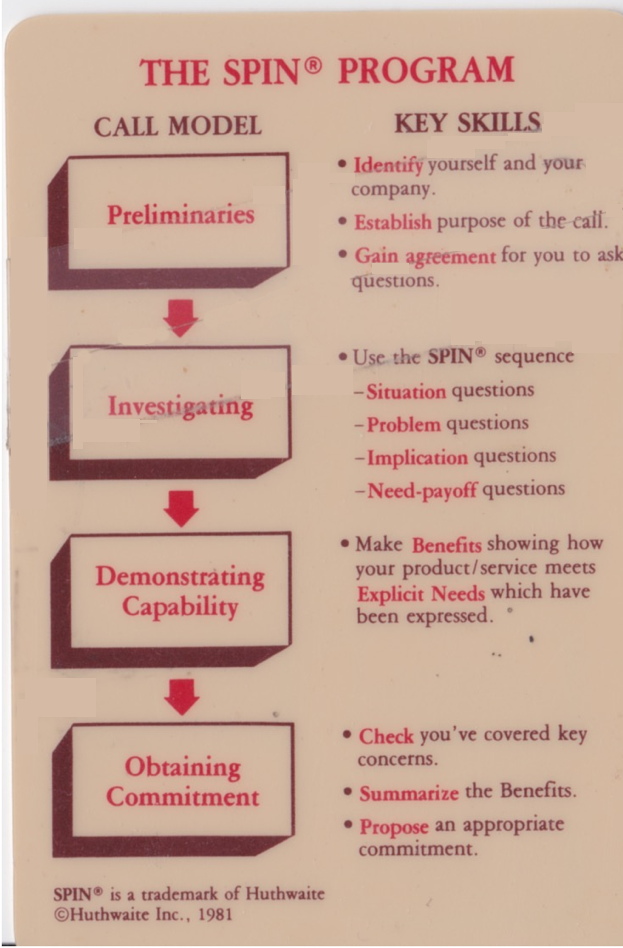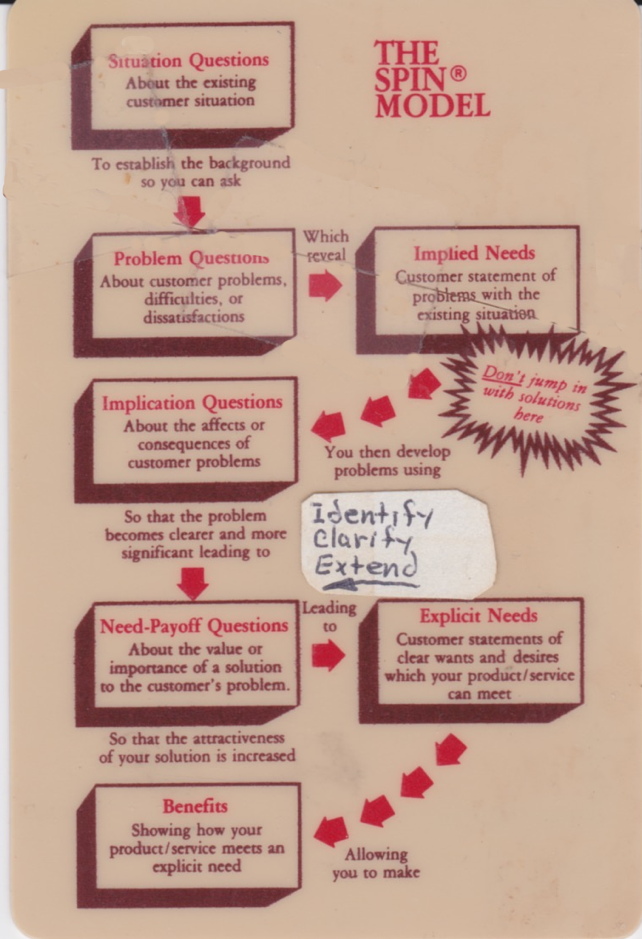Under Construction 
Selling could be a whole web site to itself. I've just put a few notes here.
The SPIN Method:
I took a marketing/sales course during a brief stint as an account executive with Exxon Office Systems, before Exxon decided to cancel it and stick to the fuel business. They used the SPIN method licensed from Xerox.
I was working with large pharmaceutical and telecommunications companies where it worked.
But, it can be used to sell your boss on changing your job description, your spouse on the need to buy a new car, or your kids on the benefits of summer school.
SPIN was developed after extensive surveys of sales calls by Neil Rackham and his company Huthwaite International in work with Xerox around 1980.
The original survey showed that in successful sales calls it's the buyer who does most of the talking, which means that the salespeople are asking questions.
Asking questions means that the salesperson is building Rapport with the buyer, building sales rapport with the buyer allows the buyer to feel more comfortable talking.
SPIN allows you to give the customer benefits rather than just features.
A feature is some whiz-bang thing your product does. A benefit is something that will allow the customer to work more efficiently (faster, cheaper, ...).
Opening benefit statements work in smaller sales but much less so than in bigger sales.
SPIN Selling proposes there are four types of questions, thus SPIN stands for :
- Situation Questions deal with the facts about the buyers existing situation. This should be brief. The more senior the buyer, the less they like answering factual questions.
Successful sellers ask fewer Situation Questions because they do their homework.
Good selling = good planning.
- Problem Questions ask about the buyer's pain and focus the buyer on this pain while clarifying the problem, before asking implication questions. . These give Implied Needs.
More experienced salespeople tended to ask more problem questions and to ask them sooner.
It is better to uncover several problems before asking implication questions. It can be dangerous to focus on one problem as it invites the buyer to raise another area where you solution does not fare so well.
- Implication Questions discuss the effects of the problem, before talking about solutions, and develop the seriousness of the problem to increase the buyer's motivation to change.
- Need-Payoff Questions get the buyer to tell you about their Explicit Needs and the benefits your solutions offers, rather than forcing you to explain the benefits to the buyer. Getting the buyer to state the benefits has greater impact while sounding a lot less pushy. What these questions do is probe for explicit needs.
Not only can it be used to sell products or services but you can use it to sell your spouse on the need for a new car or your boss on the need to modify your job description or your kids on the benefits of summer school.


Links:
SPIN selling summary
How to communicate with different personality types - DISC
last updated 2 Nov 2016
| 